Category: Articles
How Smart is Your Battery Charging?
Commentary contributed by Michele Windsor, Global Marketing Manager, Accutronics
In 1841, humans could expect to live to the ripe old age of 42 on average, depending on their gender. With significant improvements to medical knowledge and advancements in technology, this has now doubled and medical device manufacturers are under intense pressures to develop products for the aging population at a low cost, without jeopardizing quality. Read more about How Smart is Your Battery Charging? …
Ultra-Fast Charging: Can It Play a Role in the EV Revolution?
Contributed commentary by Stephen Voller, CEO and Founder, ZapGo Ltd.
Several nations, including England and China, have publicized plans to phase out traditional gas-powered vehicles in favor of electric vehicles (EVs). This has spurred debate over the technical challenges of scaling-up existing EV infrastructure and offering quick recharging for EV owners. New technology already offers ultra-fast charging for small electric vehicles and could sharply reduce EV recharging times in the future. Read more about Ultra-Fast Charging: Can It Play a Role in the EV Revolution? …
How to Charge Li-Ion with a Parasitic Load
Contributed commentary by Isidor Buchmann, CEO & Founder, Cadex Electronics Inc.
Charging a battery is simple but the complexity rises when a parasitic load is present during charge. Depending on battery chemistry, the charge process goes through several stages, and with lithium-ion Stage 1 consists of a constant current (CC) charge that brings the battery to roughly 70 percent state-of-charge (SoC). The cell reaches 4.20V/cell, a common voltage limit for Li-ion, after which Stage 2 continues by applying a constant voltage (CV) charge. The current begins to drop as the battery saturates. Full-charge is reached when the current decreases to typically 0.05C, which is one-twentieth of the rated ampere-hour. Li-ion cannot absorb overcharge and no charge is applied in Stage 3. Figure 1 illustrates typical voltage, current and capacity signatures of the CCCV charge. Read more about How to Charge Li-Ion with a Parasitic Load …
Transparent Processes from the Powder to the Cell
Contributed Commentary by Maximilian Sackerer, Senior Business Consultant for Battery and Fuel Cell Manufacturing, Siemens AG
Powerful lithium-ion batteries are a key component both in electric vehicles and for the decentralized storage of electricity from renewable energy sources. Acceptance by car drivers depends on the capacity, safety, durability, and costs of the batteries and this, in turn, will determine the future of electric mobility. All these properties have to be brought up to a worldwide competitive level in the mass production of lithium-ion cells, and continuously improved. Read more about Transparent Processes from the Powder to the Cell …
Printed and Bio-Sourced Lithium Ion Batteries for Wearable Technologies
Commentary Contributed by O. El Baradai, J. Schleuniger*, S. Fricke, C. Bosshard, CSEM SA, Switzerland
October 24, 2017 | Continuous progress in electronic devices, in particular portable electronic gadgets, is creating new opportunities and products to revolutionize our daily life. However, these ubiquitous portable devices with different functions require highly efficient power sources to sustain their use. Batteries are essential for powering such portable electronic devices. A battery is a closed system in which energy is stored in chemical form, and it is converted to electrical energy by connecting the battery to an external load to complete the circuit, causing electric current to flow between the anode and cathode. Electronics have traditionally been designed around commercial batteries:prismatic, cylindrical, and coin cells, which are bulky, rigid, and non-flexible, making them unsuitable for powering flexible electronics. Read more about Printed and Bio-Sourced Lithium Ion Batteries for Wearable Technologies …
Optimal Rheology, Better Electrodes: Understanding the Links Between Battery Slurry Properties and Electrode Performance
Commentary Contributed by Dr. John Duffy, Product Marketing Manager, Malvern Panalytical
October 20, 2017 | The multistep process used to manufacture battery electrodes must be closely controlled to produce components that deliver desirable electrochemical performance. In order to achieve this, the rheological properties of the slurries used during processing must be optimized, since these properties affect important characteristics such as slurry stability, ease of mixing, and coating performance, which impact on the properties of the finished electrode. Electrode slurries typically include electrochemically active materials, conductive additives, and binders, in addition to solvent, and both composition and the properties of each component can have an impact on the rheology of the resulting suspension. However, so too can the processing conditions applied. Each process step subjects a slurry to different stresses and each optimally calls for different rheological characteristics. Read more about Optimal Rheology, Better Electrodes: Understanding the Links Between Battery Slurry Properties and Electrode Performance …













